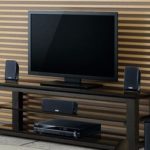Optical input function when installing a home theater
A lot of wonderful minutes gives us the enveloping atmosphere of surround sound during film viewing. The television receiver itself cannot create high-level sound images, as its loudspeakers do not reproduce a large range of audio signals. To create high-quality sound you can connect home theater using optical input.
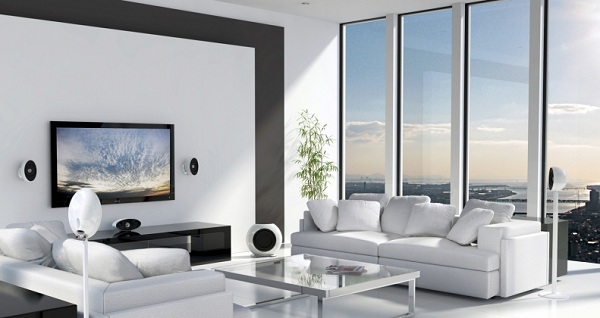
Content
Direct connection via connectors
The sound of the most prestigious TV can not be compared with high-quality sound home theater acoustics. There are several options for switching a home cinema audio system with a TV:
- use of optical input;
- connection by coaxial digital cable;
- connection "tulip to tulip";
- connector application.
It is necessary to purchase additional cables and special devices.
This material will not discuss how to connect devices using a coaxial trunk and a cinch-type cable. Such connections are in the past, they lead to large losses when sound output, and the nests for the use of such cables will gradually disappear from the rear panels of digital equipment.
The best way to broadcast multichannel sound from a television signal source to a home theater is the use of a digital optical input.
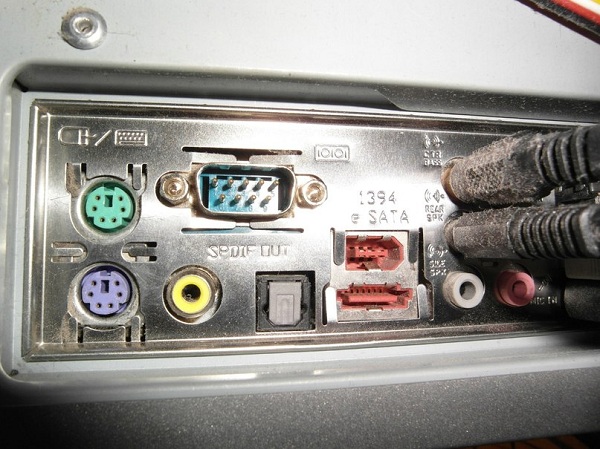
All the latest TVs have their own optical output, which provides high quality audio signal transmission. The signal is fed from the optical output of the TV to the optical input of the receiver. Simply put, the signal is transmitted through the luminous flux enclosed in the cable structure. It is necessary to make sure that the corresponding connectors are available on the receiver of the cinema and on the TV.
When connecting connectors used professional fiber optic cablewhich does not respond to any electromagnetic radiation.With the implementation of this solution, it turns out the perfect studio sound quality without interference and distortion.
Using consoles and converters
Often, equipment for home theaters was bought in different years. Often there are receivers without optical input, with the inputs for the usual cable "tulip to tulip" or coaxial line. Is it really necessary in this case to bury the dream of a quality sound signal? Of course not.
Exist special consoles, allowing you to connect home theater audio systems to a TV with optical output. In this console, there are two connectors for the respective types of cable:
- optic;
- coaxial.
Wires are included in the basic set-top box.
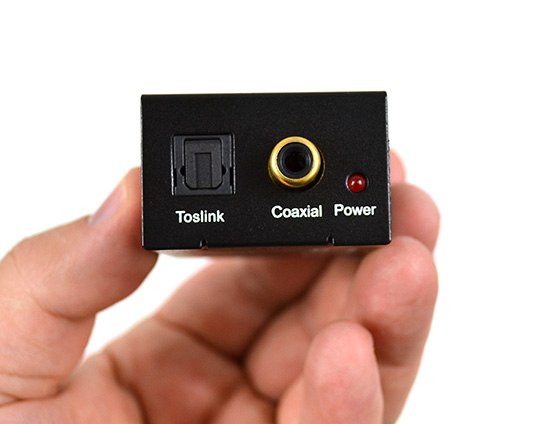
Insert fiber optic cable into the optical output of the TV and connect it to the corresponding connector on the console. Similarly, with a coaxial cable, we connect the set-top box with the home theater audio system. This is the simplest form of signal conversion.
More functional choice is active converter digital 5.1 (optics, coax) signal in analog 5.1 sound. Such a device has a number of additional features for connection.In this converter, there are two inputs for the optical signal and three dual-channel outputs to the Tulip connectors, for full connection of the home theater audio system. There is also a digital input for coaxial cable. This converter allows you to watch movies, using headphones. Connect headphones to the TV is problematic, since the latter does not have the desired output. One of the connection methods in this case — connect them to the output 2.1 on the converter, which is connected to the TV with an optical cable.
Another opportunity to watch on a home theater system is to play information. from a flash drive. Again, the TV is connected with an optical cable to the converter, the converter outputs are connected to subwoofer, front and rear speakers. A flash drive is connected to a special connector and digital multichannel audio is converted to analog multichannel.
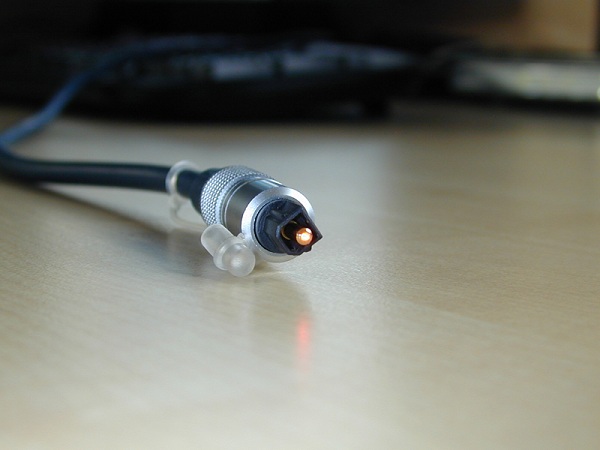
With the help of similar switching to the converter can be connected to the optical input game console, and immediately any game will sound with other colors due to the excellent surround sound.
If the speakers are powered by a wireless adapter, the converter has a 5 volt output to power the sound transmitters. Also using this connector you can charge mobile phone. Such a converter minimizes the losses from the signal transition and makes the most of the possibilities of the optical output of the TV to the coaxial input of the home theater.
The size of the product is extremely small and consumes little power. The control panel is informational and convenient.
Advantages of fiber optic cable
For a comprehensive understanding of the role of optical input as a sound reproduction, it is necessary to clarify the features of a fiber-optic conductor as part of connecting a home theater through an optical input.
The rapid development of modern technology leads to the fact that not only the form of transmitted information is developing, but also the methods of its transmission. Classic copper wires are passing away - professionals everywhere use fiber optic lines, allowing you to transfer large amounts of data at maximum speeds and with greater efficiency.
Experts divide the fiber optic cable according to the mode of passage of the beams into:
- multimode;
- single mode
In a single-mode cable, all the rays travel the same distance, and in a multimode light rays travel their way along different paths.
In the first approximation, the last generation optical fiber is a glass cylinder whose diameter is measured in microns. Such material has a large list of advantages, including:
- Both multimode and single-mode wires do not perceive the influence of their analogs at all. The cable next to the fiber will not affect its operation.
- Optical fiber is not sensitive to voltage drops, to electrical interference. As a consequence, the signal transmission is characterized by complete "purity."
- Tremendous ease, incredibly small weight in comparison with a copper wire.
- General galvanic isolation at the ends of the cable. As a result, the absence of interference contouring ground.
- Flexibility and plasticity, does not suffer from kinking.
Today, the fiber-optic backbone is the most effective tool that makes it possible to quickly and safely transmit any information.
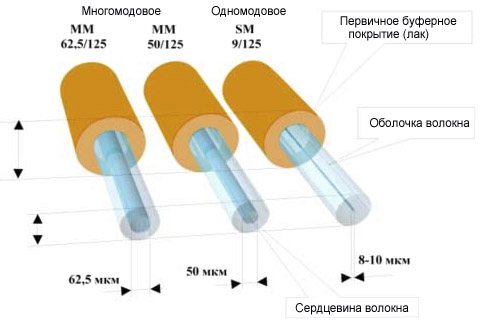
What to choose?
Don't even think about options. connect home theater - optical input is the most acceptable and highly efficient solution.It is advisable to use high-quality fiber optic line, although it is expensive. But the use of outdated cables eliminates all investments in the cinema with low sound quality. Choosing a cinema, note the presence of an optical input. Owners of a receiver without an optical input should not be upset, special adapters and converters will come to the rescue. With this transformation, the old equipment will find a new sound.

/rating_off.png)






